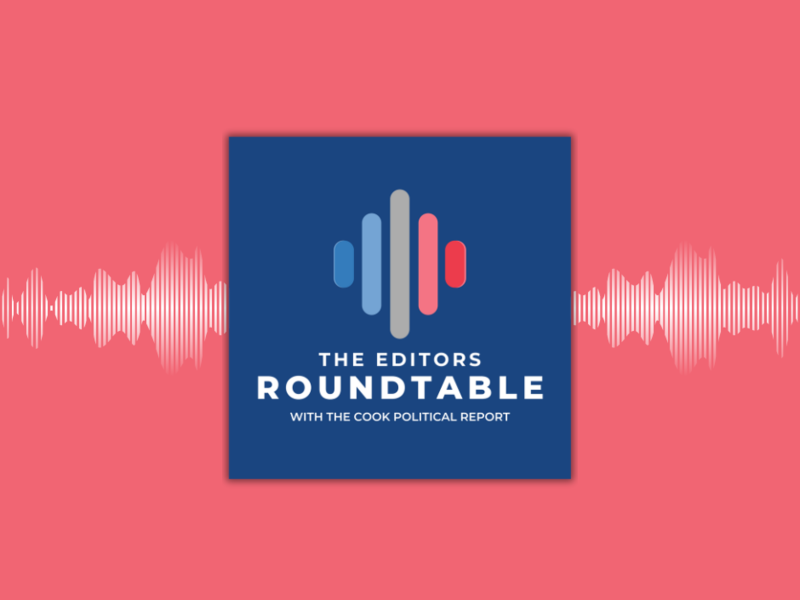
Ask any political analyst what midterm elections are about and they will respond, “midterms are almost always referenda on the incumbent president,” and the statistics bear them out. Since the end of the Civil War, the party holding the White House has had a net loss of House seats in 35 out of 38 midterm elections. Since the beginning of the last century, there have been 29 midterm elections, with the president’s party suffering a net loss of governorships in 26, and net losses of state legislative seats in 27. The laggard is the Senate, where the president’s party has lost seats in just 19 out of the 26 midterms since we began the direct election of senators in 1913. (The difference, of course, stems largely from the fact that only one-third of the Senate is up in any given midterm.)
But just how challenging a midterm election will be for a president’s party is largely determined by which party does the better job of framing that election. Just as an attorney seeks a favorable venue for a jury trial, parties seek to affect the terms on which voters will make their decisions.
Democrats have several objectives in their 2018 midterm-election messaging. First, they are seeking to make this election a referendum on President Trump, both personally and the way he handles his job. The second objective for Democrats is to convince voters to see the election in a checks-and-balances context, suggesting that it is necessary to have Democratic majorities in Congress to rein in this highly unconventional president. They argue that Republicans in the House and Senate have proven themselves unwilling or unable to save the country from Trump.
As far as specific issues are concerned, the top one for Democrats is health care. Many Democrats will acknowledge that the Affordable Care Act has problems and needs fixing but accuse Republicans who tried to repeal Obamacare of trying to sabotage it. In particular, Democrats say Republicans cannot be trusted to retain adequate coverage for preexisting conditions. And on the state level, Democrats argue that Republican governors and state legislators slashed taxes to the point that it has crippled necessary governmental functions, taking a particular toll on schools.
For the GOP, it’s useful to think of Republicans in four categories: First, there is the tea-party faction, conservatives focused on small government and low taxes or a foreign policy and trade agenda centered around the concept of “America First.” The second group is made up of conservative white evangelicals, people who may not necessarily see Trump as a model Christian, but like the conservative positions and policies that his administration has taken on social and cultural issues such as abortion. They believe that he advances their agenda in a way that other Republican leaders said they would but didn’t. Obviously, there is some overlapping between these first two groups, but together they are the Trump Core. These are the folks that are 100 percent supportive of him and his agenda.
A third group is what I call the Trump Wincers/Economy Enjoyers, and is made up of Republicans and conservatives who may not be big fans of Donald Trump as a person or his style, but do appreciate the strong economy, lower taxes, business-friendly regulatory policies, and judicial nominations. For now, those reasons are sufficient to keep these Republicans on board despite their misgivings about Trump as a person and how he conducts himself in office. The last group is made up of Trump Detractors: Republicans and conservatives who don’t like Trump as a person, or as a president. They are upset with Republicans in Congress for not reining him in, and are just deeply troubled.
My assumption is that the first two groups, the tea-party faction and white Evangelicals, will vote in November and will strongly support GOP candidates top to bottom. There was a time during Trump’s first year in office when his criticism of Republicans in Congress jeopardized their standing with these voters, but once GOP leaders convinced him that the criticism was short-sighted and self-destructive, those divisions began to heal. Expect Republicans to argue to this core that Democrats are trying to nullify the 2016 election, that their mission is to impeach Trump and remove him from office, and that electing Republican majorities in the House and Senate are the only ways to head this off.
For the third and fourth groups of Republicans, the GOP argument is “whatever you may think about Trump and his style, the economy is great, the tax cuts are working, and if Democrats win majorities in the House and Senate, they will seek to reverse all of the policies that have turned the economy around.” On Friday, Rep. Steve Stivers, who as chairman of the National Republican Congressional Committee has the unenviable task of defending their party’s House majority, told a Christian Science Monitor-hosted breakfast with reporters that the election amounts to a contrast between Republicans pushing a “peace and prosperity” agenda versus Democrats who want “poverty and insecurity,” adding that, “I think it’s a pretty good matchup for us.” The Republican argument will come down to the question, “Do you want to jeopardize everything that is good that is happening because you don’t like Trump or his style?”
The party that does the better job of framing this election will prevail. Now let the games begin.










Subscribe Today
Our subscribers have first access to individual race pages for each House, Senate and Governors race, which will include race ratings (each race is rated on a seven-point scale) and a narrative analysis pertaining to that race.